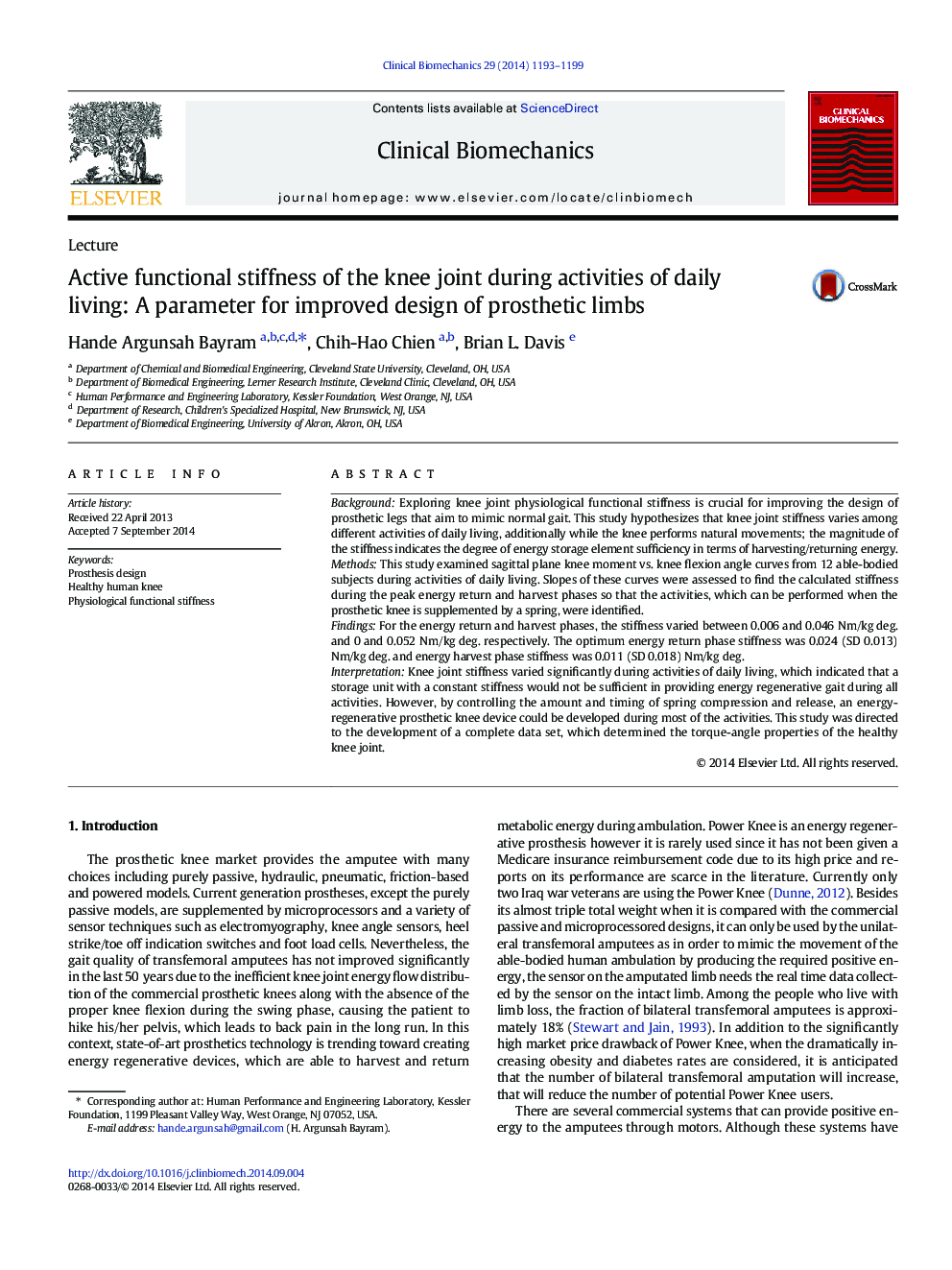| Article ID | Journal | Published Year | Pages | File Type |
|---|---|---|---|---|
| 6204781 | Clinical Biomechanics | 2014 | 7 Pages |
â¢Exploring knee functional stiffness is crucial for improving prosthetic leg design.â¢Knee joint stiffness varies among different activities of daily living.â¢Different centers of mass and applied weight portion cause various knee stiffness.â¢Stiffness magnitude indicates the degree of energy storage element sufficiency.â¢A simple spring mechanism alone is insufficient in achieving fully assisted gait.
BackgroundExploring knee joint physiological functional stiffness is crucial for improving the design of prosthetic legs that aim to mimic normal gait. This study hypothesizes that knee joint stiffness varies among different activities of daily living, additionally while the knee performs natural movements; the magnitude of the stiffness indicates the degree of energy storage element sufficiency in terms of harvesting/returning energy.MethodsThis study examined sagittal plane knee moment vs. knee flexion angle curves from 12 able-bodied subjects during activities of daily living. Slopes of these curves were assessed to find the calculated stiffness during the peak energy return and harvest phases so that the activities, which can be performed when the prosthetic knee is supplemented by a spring, were identified.FindingsFor the energy return and harvest phases, the stiffness varied between 0.006 and 0.046 Nm/kg deg. and 0 and 0.052 Nm/kg deg. respectively. The optimum energy return phase stiffness was 0.024 (SD 0.013) Nm/kg deg. and energy harvest phase stiffness was 0.011 (SD 0.018) Nm/kg deg.InterpretationKnee joint stiffness varied significantly during activities of daily living, which indicated that a storage unit with a constant stiffness would not be sufficient in providing energy regenerative gait during all activities. However, by controlling the amount and timing of spring compression and release, an energy-regenerative prosthetic knee device could be developed during most of the activities. This study was directed to the development of a complete data set, which determined the torque-angle properties of the healthy knee joint.
